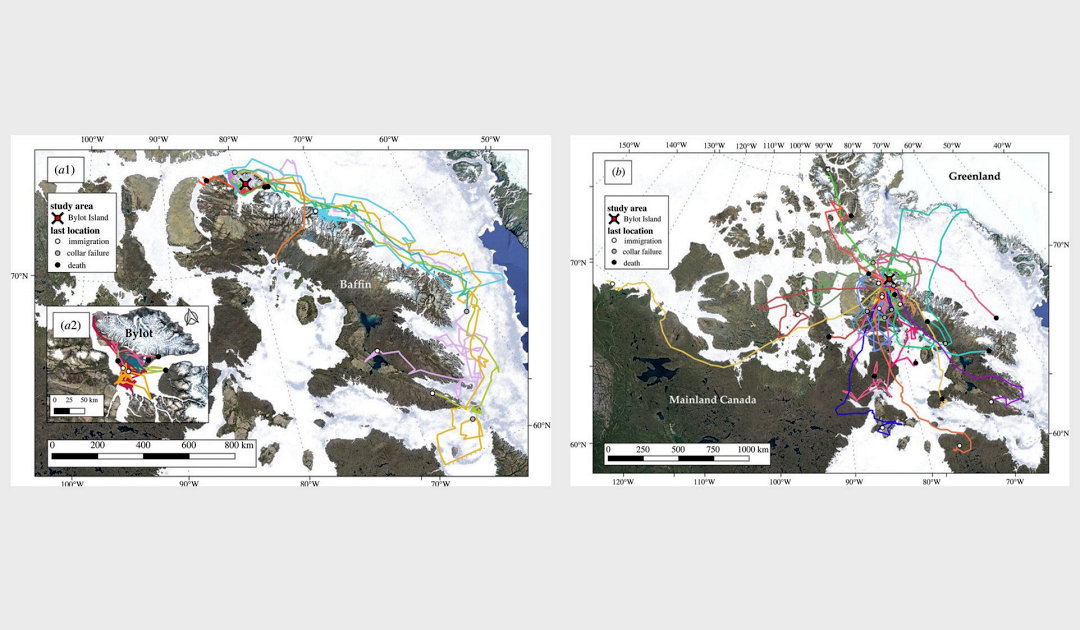
The Arctic is vast, covering some 16.5 million square kilometers. Moving around in it and finding suitable places for reproduction and food means animals have to travel long distances. Four years ago, when researchers discovered a young Arctic fox that had traveled more than 4,400 kilometers as it migrated from Svalbard to the Canadian Arctic, experts expressed surprise at this huge distance. But according to a new long-term study, this migration of the young vixen may have been just the tip of the iceberg.
When young foxes leave their parents’ den at the end of an Arctic summer, they set off in search of a suitable territory of their own and can cover an average of over 4,800 kilometers within just under a year. In comparison, adult animals seem more like “couch potatoes” that “only” cover about a third of the distance and are also only on the move about a third of the time. This is the result of a long-term study of polar foxes in the eastern Canadian Arctic, lasting about 13 years, recently published in the journal Royal Society Open Science by Dr. Richard Gravel and his colleagues Dr. Sandra Lai and Dr. Dominique Berteaux of the University of Québec in Rimouski.



Arctic foxes, which are not large predators with a live weight of just under 3 kilograms, have managed to colonize all areas of the Arctic and part of the subarctic in the course of their evolution. The animals are known to travel on the Arctic sea ice without hesitation and have a wide diet. But until now, few details were known about the animals’ migratory behavior. “Most studies have focused on birds,” the team writes in their paper. But for the study, Richard Gravel wanted to examine the extent to which the different life stages of Arctic foxes play a role in the migrations and dispersal of the species. This is also important with regard to the spread of diseases such as rabies. Because especially in the Canadian Arctic, cases of fox bites on dogs are being reported more and more frequently.
For the results of the study, the migration patterns of 170 Arctic foxes that had been fitted with GPS collars were examined over the course of 13 years. The animals were all captured and transmittered on Bylot Island, located at the northern entrance to the Northwest Passage in Nunavut, Canada. This high number was also necessary, because in the end only 10 young Arctic foxes and 27 adults undertook long-distance migrations within one year.

Polar foxes did not stop at the sea ice between Canada and Greenland. One of the animals actually migrated over time from Nunavut to the northwest corner of Greenland, then south along the coast and back to Nunavut. Another animal covered the distance between the Alaska border to Baffin Island. But despite the big difference in terms of minimum distance, the different age groups also showed similarities. For example, juvenile foxes traveled longer distances but covered a less direct, linear path, and their daily performance was also lower than that of adults, but not statistically significant. In the end, the animals mostly stayed within the larger radius of Bylot. “This is directly related to their initial phase of migration, which was restricted to Bylot Island due to the lack of sea ice in the fall,” the team believes. For them, sea ice is one of the most important factors that play a role in the dispersal and migratory propensity of Arctic foxes. And while their study offers an important insight into the age-dependent lifestyle of Arctic foxes, they caution against generalizing their results. “Patterns may vary from population to population depending on local ecological conditions,” they conclude. That’s why they’d like to see the study continue in other locations with young foxes to learn even more about the migratory nature of these small, adaptable predators.
Dr Michael Wenger, PolarJournal
More on the topic





